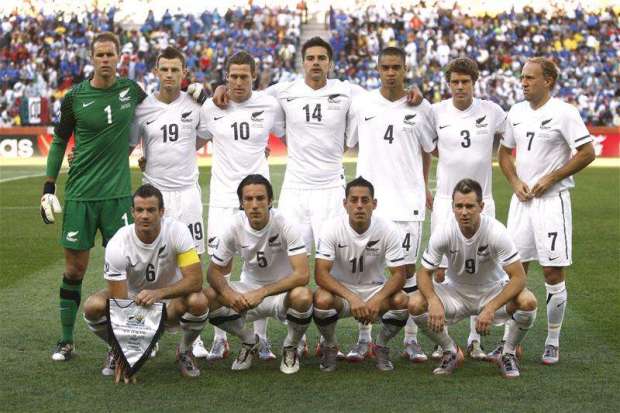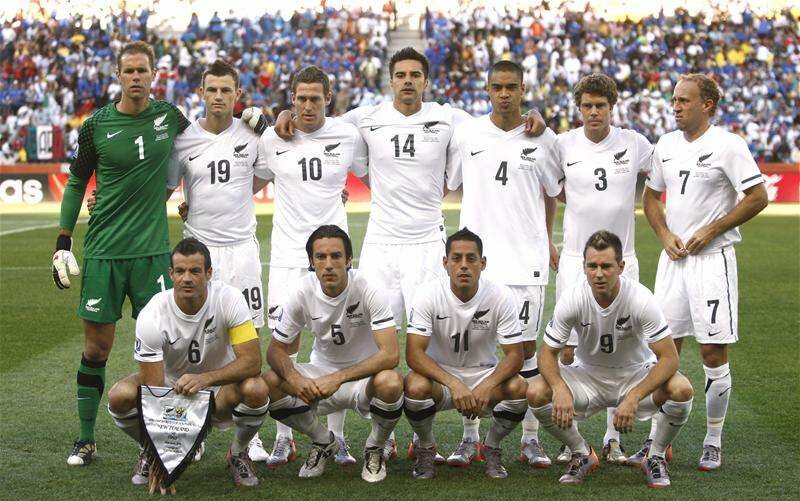 Neil Cotton looks at the gulf between the All Blacks and All Whites – and the bid to close the gap
Neil Cotton looks at the gulf between the All Blacks and All Whites – and the bid to close the gap
As the New Zealand All Blacks once again grace the stage of the Rugby World Cup, having entered the tournament as number one in the world rankings, the contrast with the national football team, the All Whites, cannot be greater. After reaching a high of 49th in the world in 2002, they currently languish in 148th place in the FIFA rankings. For them just qualifying for a World Cup finals is an achievement – which so far has only happened twice, in 1982 and 2010.
When it comes to their respective domestic situations, the gulf between the two codes is no less gaping. In rugby, five Kiwi teams compete in the Super Rugby tournament, a lucrative multi-national competition which also features clubs from Australia and South Africa and is set to expand further to include clubs from Argentina and Japan.
Since its start as a professional tournament in 1996, Kiwi teams have excelled, claiming 13 championship titles out of a possible 20, and the competition dominates the back pages of newspapers from Cape Reinga to Invercargill.
Establishing an elite football league has though proved to be an enterprise fraught with difficulty. The first fully nationwide football league was launched in 1970 and enjoyed an initial period of success which undoubtedly contributed to the All Whites’ first-ever qualification for the World Cup finals in 1982. By1992 however – just ten years on – the league had folded. A combination of a worsening economic climate, over-expansion leading to higher travel costs and a dilution of playing standards (the league having gone from an initial eight teams to 14 by 1987), and competition from other sports such as cricket and a resurgent rugby had left many of the clubs facing severe financial difficulty and the league unable to continue.
Over two decades on, the search for a competition format which is genuinely nationwide, provides a platform for player development and is, most crucially, financially sustainable has continued to prove elusive.
Following the original national league’s demise, numerous ideas have been trialled and changes made, including regional leagues with a play-off competition for the national championship, invitation leagues, a switch to summer – chiefly to avoid competition from rugby – and even the awarding of bonus points based on goals scored which was briefly adopted for the 2000 season. The current franchise-based format, the ASB Premiership, introduced in 2004, has provided a period of stability, but, despite enduring for a decade, it has, like its predecessors, struggled to attract the interest of broadcasters, or spectators – one game between Waitakere and Hawkes Bay in the 2014-15 season attracted a crowd which was put at around 150.
Unsurprisingly, there remain concerns that the financial base for the league and its clubs remains as fragile as ever and earlier this year New Zealand Football’s chief executive Andy Martin commented that “there’s a lot of dependency on trust funding (grant-aid from community trusts who raise revenue through gambling machines) and some of the clubs aren’t as financially secure as we might want them to be”.
The solution according to New Zealand Football, who embarked on a review and consultation process, is for another change to the structure of the league. Their aspiration, unveiled at the start of October, is for a tenteam, 30-round competition to be in place by the 2018-19 season. Although by itself news of yet another format change is more likely to result in resigned sighs from New Zealand’s footballing community than any unbridled optimism, there is nevertheless hope for the future; In September came a surprise announcement that for the 2015-16 season, set to begin in November, Sky – who lost the rights to screen English Premier League games in New Zealand in 2013 – would broadcast 32 of the ASB Premiership’s 59 games live. This has generated much excitement for, as Steven Holloway pointed out in The New Zealand Herald, the last time that a domestic game which was not a final was broadcast live on television was sometime in the late 1970s.
Though it is not clear whether clubs will receive any direct financial benefit from the rights to their games – indeed this seems unlikely – the deal may nevertheless open the door to more lucrative sponsorship and commercial deals, as well as enabling clubs to reach out to more potential spectators. The timing of the deal also allows for the maintaining of momentum around New Zealand’s successful hosting of the U20 World Cup – where a crowd of 25,000 spectators watched the All Whites draw 0-0 with the Ukraine in Auckland. Football in New Zealand may still be some way behind rugby, but there is a hope that now a corner may have been turned


















